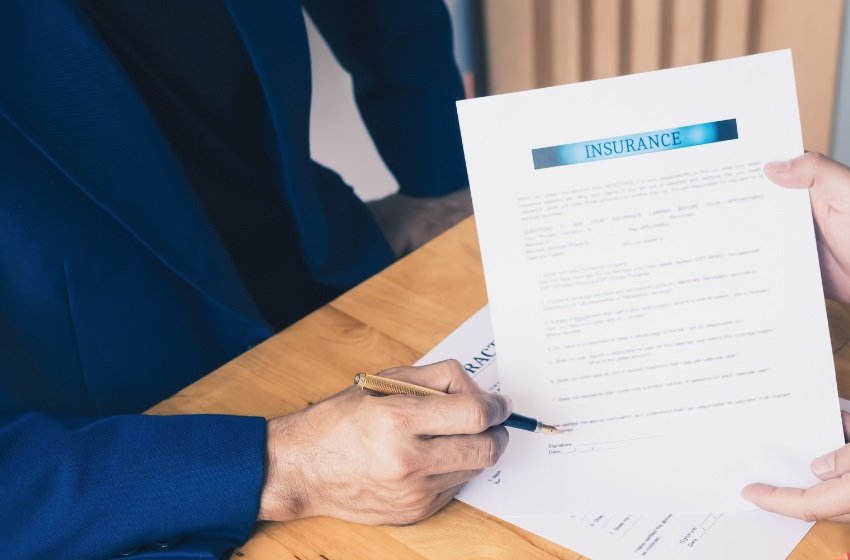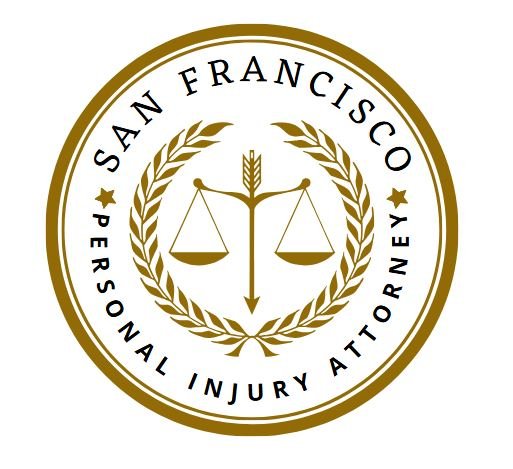Accident Attorney – San Francisco, CA
What to Expect During a Consultation with a San Francisco Accident Attorney
If you’ve been involved in an accident in San Francisco, seeking legal help can feel overwhelming. However, scheduling a consultation with a qualified accident attorney can clarify your rights, the strength of your case, and the next steps in your recovery journey. Here’s what you can expect during this critical first meeting.
1. Case Evaluation
The consultation begins with a detailed evaluation of your case. The attorney will ask questions about the accident, such as:
– What happened? Provide a timeline of events leading up to and following the accident.
– Were there injuries? Share details about any medical treatment you’ve received or ongoing health concerns.
– Who was involved? List the individuals, businesses, or organizations potentially liable for your injuries.
This initial discussion helps the attorney determine if you have a viable claim. If your situation involves more complex scenarios—such as disputes about fault or multiple parties—a San Francisco personal injury attorney can assess these nuances and explain how they might impact your case.
2. Explanation of Legal Options
After reviewing your case, the attorney will outline your legal options. These might include:
– Filing an insurance claim.
– Negotiating a settlement with the at-fault party.
– Pursuing a lawsuit if necessary.
The attorney may also explain California’s comparative negligence law, which affects how damages are awarded if multiple parties share fault in an accident. This is particularly relevant in situations like car accidents, where liability can be contested. A car accident lawyer familiar with San Francisco’s traffic and legal landscape will be especially valuable.
3. Discussion of Fees and Costs
Most San Francisco accident attorneys work on a contingency fee basis, meaning you don’t pay upfront. Instead, the attorney receives a percentage of the settlement or court award if your case is successful. During the consultation, the lawyer will explain their fee structure and any additional costs you might incur, such as court filing fees or expert witness expenses.
4. Gathering Documentation
To get the most out of your consultation, bring the following documents:
– Police Reports: If available, these provide critical details about the incident.
– Medical Records: Include hospital bills, doctor’s notes, and treatment plans.
– Photos or Videos: Evidence from the accident scene or your injuries can be invaluable.
– Insurance Information: Share copies of your policy and correspondence with insurers.
By reviewing these materials, your attorney can better assess your case’s potential and recommend a strategy tailored to your needs.
5. Setting Realistic Expectations
One of the key benefits of a consultation is understanding what you can reasonably expect from your claim. Your attorney will discuss:
– Potential compensation for medical expenses, lost wages, pain, and suffering.
– The likely timeline for resolving your case, whether through settlement or trial.
– Challenges you may face, such as proving negligence or negotiating with insurance companies.
This honest assessment ensures you have a clear picture of your case’s strengths and limitations.
Why Choose a San Francisco Accident Attorney?
San Francisco has unique legal and logistical challenges. From navigating busy streets prone to accidents to dealing with insurance companies well-versed in California’s laws, a local attorney can provide the expertise you need. If your case involves personal injury, consulting with a San Francisco personal injury attorney ensures you receive tailored advice for the city’s specific legal environment.
Next Steps
Once the consultation concludes, the attorney will let you know if they can take your case. If you decide to proceed, they’ll guide you through the next steps, from filing paperwork to negotiating settlements or preparing for trial.
If you’ve recently been in an accident, don’t delay. The sooner you seek legal advice, the stronger your case will likely be. Whether you’re dealing with a car crash, workplace injury, or other incident, contacting a San Francisco personal injury attorney or car accident lawyer can be the first step toward securing the compensation you deserve.


Got Questions? Call Now To Get Answers
Common Mistakes to Avoid When Filing an Accident Claim in San Francisco
Filing an accident claim in San Francisco can be a daunting process, especially if you’re dealing with injuries, emotional distress, and financial losses. Unfortunately, certain mistakes can jeopardize your claim, delay the resolution, or even reduce the compensation you deserve. Knowing these common pitfalls and how to avoid them is essential to strengthening your case.
1. Delaying Medical Attention
One of the most critical mistakes is failing to seek medical care promptly after an accident. Even if your injuries seem minor, delaying treatment can:
– Worsen your condition.
– Give insurance companies a reason to downplay your claim.
A doctor’s evaluation not only protects your health but also serves as key evidence to support your case. If you were involved in a slip and fall accident, for example, seeking medical care immediately is vital for building a strong case with a slip and fall attorney.
2. Not Reporting the Accident
Failing to report the incident to the proper authorities can hurt your claim. For example:
– Car accidents should be reported to law enforcement.
– Slip and falls should be documented with the property owner or manager.
An official report creates a record of the event, which can be used as evidence later. Without it, proving the circumstances of the accident becomes more challenging.
3. Admitting Fault
In the aftermath of an accident, it’s natural to feel shaken or apologetic. However, statements like “I’m sorry” or admitting fault—even unintentionally—can be used against you during the claims process. In California, which follows a comparative negligence rule, even partial responsibility for an accident can reduce your compensation.
Let your injury lawyer near me handle communication with insurance companies and other parties to avoid any missteps.
4. Not Gathering Evidence
Strong evidence is crucial to a successful accident claim. Many people make the mistake of not collecting enough evidence at the scene. Here’s what to document:
– Photos of injuries, property damage, and the accident location.
– Contact information of witnesses.
– Weather, lighting, or hazardous conditions that contributed to the incident.
For a slip and fall case, take clear photos of the hazard such as a wet floor or uneven surfaceto strengthen your case when working with a slip and fall attorney.
5. Failing to Keep Records
Accident claims require detailed documentation, including:
– Medical bills and records.
– Lost wages or income due to missed work.
– Receipts for out-of-pocket expenses related to the accident.
Disorganized or incomplete records can weaken your claim and make it harder for your attorney to secure maximum compensation.
6. Speaking Directly to Insurance Companies
Insurance adjusters often try to minimize payouts by:
– Pressuring you to accept a low settlement.
– Twisting your statements to reduce liability.
Avoid speaking to insurance companies without consulting an attorney. A qualified injury lawyer near me can handle negotiations on your behalf to protect your rights and ensure fair treatment.
7. Missing Deadlines
California’s statute of limitations for filing an accident claim is typically two years from the date of the incident. Missing this deadline means forfeiting your right to pursue compensation.
However, deadlines can vary based on the specifics of your case, such as claims against government entities. A local attorney in San Francisco can help you navigate these timelines effectively.
8. Accepting the First Settlement Offer
Insurance companies often offer quick settlements to resolve claims cheaply. While the amount may seem tempting, it’s rarely sufficient to cover all damages, especially if your injuries require ongoing treatment.
Consult with an attorney before accepting any offer to ensure it reflects the full value of your claim.
9. Representing Yourself
Attempting to handle your accident claim without legal representation is risky, especially if the case involves complex issues like disputed liability or severe injuries. An experienced slip and fall attorney or injury lawyer near me understands the legal system, negotiates effectively with insurance companies, and maximizes your chances of fair compensation.
10. Posting on Social Media
Sharing details about your accident or injuries on social media can be a critical mistake. Insurance adjusters and opposing attorneys may use your posts to:
– Challenge the severity of your injuries.
– Claim inconsistencies in your story.
To protect your case, avoid discussing the accident online until your claim is resolved.
Conclusion
Filing an accident claim in San Francisco requires careful planning and execution. By avoiding these common mistakes, you can strengthen your case and improve your chances of securing the compensation you deserve.
Whether you need assistance with a slip and fall claim or a car accident case, working with an injury lawyer near me ensures you have the guidance and expertise needed to navigate the legal process effectively. Contact a trusted attorney today to protect your rights and achieve the best possible outcome for your case.


Got Questions? Call Now To Get Answers
Understanding Statutes of Limitations for Accident Claims in San Francisco
When filing an accident claim in San Francisco, understanding the statutes of limitations is critical. This legal deadline determines how much time you have to file a lawsuit after an accident. Missing this deadline can mean losing your right to seek compensation, no matter how strong your case might be. Here’s a closer look at how statutes of limitations work and what you need to know to protect your claim.
What Are Statutes of Limitations?
Statutes of limitations are laws that set time limits for filing a lawsuit in civil court. These timeframes vary based on the type of case, the circumstances of the accident, and the parties involved. For personal injury claims in California, these are the key deadlines:
1. General Personal Injury Claims
If you’re injured in an accident caused by another party’s negligence, you generally have two years from the date of the accident to file a lawsuit.
2. Property Damage Claims
For property damage, such as a car repair after an accident, the statute of limitations is three years from the date of the incident.
3. Claims Against Government Entities
If your accident involves a government agency (e.g., a collision with a city-owned vehicle or a hazardous roadway), you must file a claim within six months of the incident. This shorter timeline requires immediate action, so consulting a truck accident attorney or other legal expert is essential.
Why Statutes of Limitations Are Important
Filing within the statute of limitations is crucial for several reasons:
– Legal Validity: Courts will dismiss your case if you miss the deadline.
– Preservation of Evidence: Key evidence, such as witness testimony or accident scene details, may degrade over time.
– Leverage in Negotiations: Filing within the timeframe strengthens your position in settlement discussions.
Exceptions to the Rule
While statutes of limitations are generally strict, certain exceptions may apply in specific circumstances:
1. Discovery of Harm: If you don’t discover your injury immediately (e.g., delayed symptoms from a truck accident), the clock may start from the date you became aware of the harm.
2. Minors: For victims under 18, the statute may pause until they turn 18.
3. Mental Incapacity: If the victim is mentally incapacitated, the statute may be tolled until they regain capacity.
A knowledgeable truck accident attorney can evaluate your situation to determine if any exceptions apply to your case.
How a Truck Accident Attorney Can Help
Truck accidents often involve complex liability issues, such as determining whether the truck driver, trucking company, or vehicle manufacturer is at fault. Navigating the legal landscape while adhering to strict statutes of limitations can be overwhelming.
An experienced attorney can help by:
– Investigating your case to uncover evidence.
– Identifying all liable parties.
– Ensuring your claim is filed within the required deadlines.
If your accident involved a truck, enlisting a truck accident attorney familiar with California’s specific regulations can significantly impact the outcome of your case.
Steps to Protect Your Claim
To avoid missing the statute of limitations, follow these steps:
1. Seek Immediate Medical Attention: Your health should be your top priority. Prompt treatment also creates a record of your injuries.
2. Report the Accident: File a report with the appropriate authorities, such as the police or a property owner.
3. Consult an Attorney Quickly: The sooner you meet with a lawyer, the better your chances of preserving evidence and meeting deadlines.
Conclusion
Understanding the statutes of limitations for accident claims in San Francisco is essential for protecting your right to compensation. Whether you’re dealing with a car collision, a slip and fall, or a truck accident, acting promptly ensures your claim remains valid.
For complex cases like truck accidents, working with a skilled truck accident attorney can make all the difference. Their expertise in handling strict deadlines, investigating liability, and negotiating settlements gives you the best chance at achieving a favorable outcome.
Take action today to secure your rights and maximize your recovery. If you need guidance, don’t hesitate to reach out to an experienced attorney near you.
Got Questions? Call Now To Get Answers
How California’s Comparative Negligence Law Impacts Your Accident Claim in San Francisco
California’s comparative negligence law plays a critical role in determining the outcome of accident claims, particularly in San Francisco, a city known for its dense traffic, diverse landscapes, and unique legal challenges. If you’ve been injured in an accident, understanding this law can help you navigate your case and maximize your compensation.
What Is Comparative Negligence?
Comparative negligence is a legal doctrine used to assign fault among multiple parties involved in an accident. California follows the pure comparative negligence model, meaning:
– You can recover damages even if you are partially at fault for the accident.
– Your compensation will be reduced by the percentage of fault attributed to you.
For example, if you are found 20% responsible for a car accident and your damages amount to $100,000, you can still recover $80,000.
How Fault Is Determined
Fault is determined based on evidence such as:
– Police reports.
– Witness statements.
– Surveillance footage.
– Expert testimony (e.g., accident reconstruction specialists).
Insurance companies and courts assess the actions of all parties to allocate percentages of fault.
Impact on Different Types of Accident Claims
1. Car Accidents
In car accidents, fault can be shared in various ways. For instance, if one driver runs a red light and the other is speeding, both may share liability. If you’re involved in such a case, an experienced attorney can help minimize your assigned fault to maximize your compensation.
2. Slip and Fall Cases
Comparative negligence is often applied in slip and fall claims. A property owner may argue that you were distracted (e.g., using your phone) and therefore partly responsible for the accident. This can reduce your compensation unless you present strong evidence to counter their claim.
3. Truck Accidents
Truck accidents often involve multiple parties, including drivers, trucking companies, and vehicle manufacturers. California’s comparative negligence law ensures that each party is held accountable for their portion of the fault, but these cases require thorough investigation to identify all liable entities.
Challenges of Comparative Negligence in San Francisco
San Francisco’s urban environment introduces unique complexities:
– Congested Roads: With heavy traffic and narrow streets, determining fault in vehicle accidents often involves multiple parties.
– Pedestrian and Cyclist Incidents: The city’s high number of walkers and cyclists can complicate fault allocation.
– Diverse Property Owners: In slip and fall cases, identifying responsible parties may be challenging, particularly in multi-unit or commercial properties.
An experienced personal injury lawyer familiar with San Francisco’s specific challenges can help navigate these complexities effectively.
Maximizing Compensation Under Comparative Negligence
To minimize the impact of comparative negligence on your claim, take the following steps:
1. Gather Strong Evidence
Document the accident scene thoroughly with photos, videos, and witness statements. This can help establish the fault of other parties and reduce your assigned percentage of responsibility.
2. Seek Immediate Medical Attention
Prompt medical care creates a clear record of your injuries, making it harder for opposing parties to dispute your claim.
3. Avoid Admitting Fault
Refrain from making statements like “I’m sorry” or discussing details of the accident with insurance adjusters without legal counsel. These could be used to assign you a higher percentage of fault.
4. Work With an Experienced Attorney
A skilled attorney can:
– Challenge unfair fault allocations.
– Gather additional evidence to strengthen your case.
– Negotiate with insurance companies to ensure a fair settlement.
Real-Life Example
Imagine you’re involved in a pedestrian accident in San Francisco. The driver claims you crossed the street outside the crosswalk, while you argue that the driver was distracted. Under California’s comparative negligence law:
– The court determines you were 30% at fault for jaywalking.
– Your total damages are $50,000.
– You are eligible to recover $35,000 (70% of the total damages).
This example illustrates how fault allocation directly impacts compensation and underscores the importance of minimizing your percentage of responsibility.
Conclusion
California’s comparative negligence law ensures that accident victims can recover compensation even when they share some degree of fault. However, navigating this legal framework requires a strategic approach, especially in a city like San Francisco, where accidents often involve unique challenges.
Working with an experienced personal injury attorney familiar with San Francisco’s laws can help you gather evidence, minimize your assigned fault, and secure the maximum compensation you deserve.
If you’ve been involved in an accident, don’t leave your case to chance. Contact a trusted lawyer today to protect your rights and achieve a favorable outcome.


Got Questions? Call Now To Get Answers
Reach Us
San Francisco Personal Injury Attorney
498 Castro St,
San Francisco, CA 94114
(213) 698-5381
Hours of Operation
Mon Open 24 hours
Tue Open 24 hours
Wed Open 24 hours
Thu Open 24 hours
Fri Open 24 hours
Sat Open 24 hours
Sun Open 24 hours
